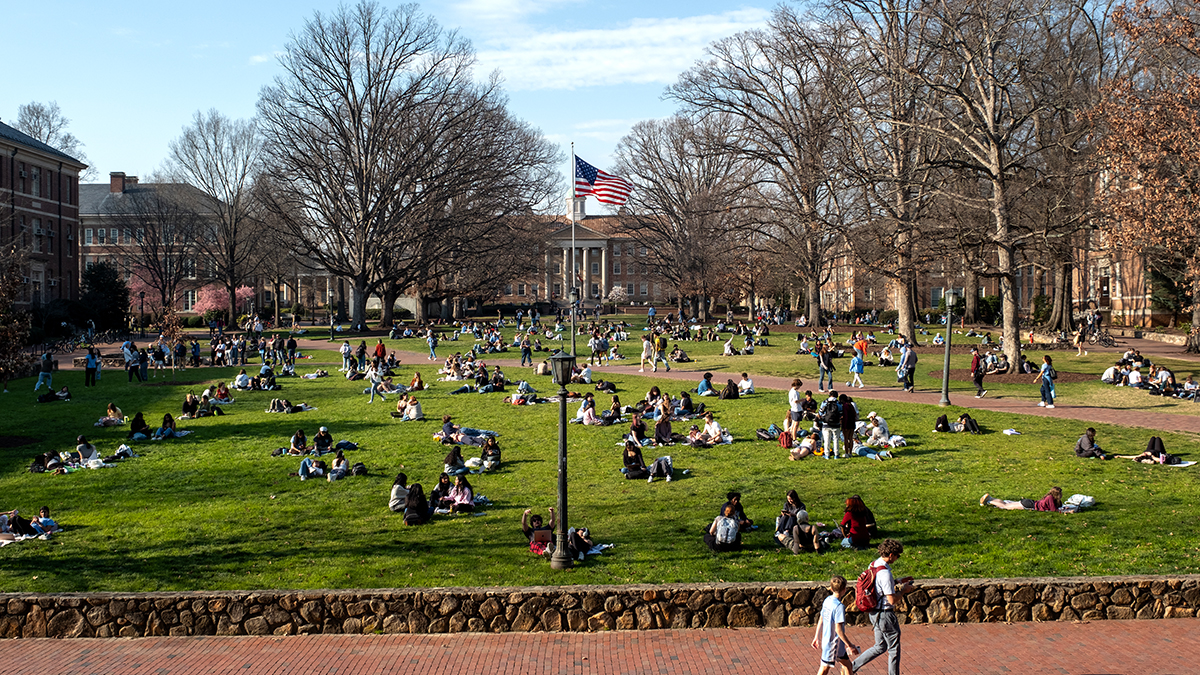Trustees learn about the power of discovery
Carolina Trustees hear about the Lineberger Center, now in its 40th year, and its partnership with IBM’s Watson, which can tap into tens of millions of pieces of data in a matter of a few seconds.
Over the past two days, UNC-Chapel Hill Board of Trustees members were treated to the full sweep of Carolina’s research enterprise and its power to transform – and save – lives.
That process began Wednesday afternoon with a field trip to the 3,500-square-foot BeAM (Be A Maker) space in Murray Hall. It resumed Thursday morning at Carolina Inn when trustees learned about how researchers at the Lineberger Comprehensive Care Center have harnessed the computing power of IBM’s Watson to discover treatments that would not have been humanly possible to find.
Chancellor Carol L. Folt said the Lineberger Center, now in its 40th year, sees 170,000 patients each year and thousands more through telemedicine and partnerships. But, Folt said, it was its partnership with IBM’s Watson that has allowed Lineberger researchers to cull through and generate useful clinical insights from massive amounts of data – a breakthrough highlighted last month in a “60 Minutes” story titled “How Watson went from winning ‘Jeopardy’ to fighting cancer.”
In March, journalist Charles Peete “Charlie” Rose Jr. interviewed Lineberger director Ned Sharpless and others to learn about the cancer center research study that paired UNCseq, which produces volumes of genetic information from a patient’s tumor, with IBM’s Watson and its ability to quickly pull information from millions of medical papers that could be potentially relevant for a patient.
In a presentation before trustees, Sharpless explained how the study, which involved 1,000 cancer patients, demonstrated how Watson could tap into tens of millions of pieces of data in a matter of a few seconds to identify 300 additional therapies that a team of physicians could not.
This result represented the first demonstration of how artificial intelligence could be used to enhance cancer care and has fueled global interest in the Watson project that has already positioned Carolina at the forefront of cancer genomics. Within a week after the “60 Minutes” episode aired on Oct. 9, Quest Diagnostics announced a somatic sequencing test with Watson, and Foundation Medicine announced it would use artificial intelligence for genomic analysis.
Since the “60 Minutes” story aired, Sharpless told trustees he has received countless emails from people. The one question he likes to answer most comes from people with cancer wanting to know how they can get Watson to help diagnose their cancer.
“The answer to that is incredibly easy,” Sharpless said.
Because it is scalable over the internet, any patient in the country can now request a diagnosis to a lab and IBM can use the tool we developed to run an analysis on it, he said.
“It is remarkable how quickly this has gone from an experimental idea to sort of standard care readily available,” Sharpless said.
At BeAM on Wednesday, members of the Commercialization and Economic Development committee came to see firsthand why the University invested in the industrial-style suite of rooms fully equipped for woodworking, metalworking, 3-D printing and more.
In the brightly lit textiles room humming with ventilation fans, committee members heard about a wide range of uses of the space:
- Testing an artificial retina designed by a faculty member’s spin-out company;
- Validating a computer model of how blood flows through heart valves;
- Creating a pipette-free way to do experiments; and
- Turning metal sculptures into beehives.
The Murray Hall space is the largest of the three campus facilities, joining Kenan Science Library and Hanes Art Center). Its central location will make it the hub of the BeAM network and crucial to interdisciplinary collaboration.
Makerspace is not just a machine shop for testing models. It is an integral part of universities’ transformation from “thinking and learning” to “doing and impact,” said Rich Superfine, Taylor Williams Distinguished Professor of Physics and Astronomy.
“The textbook is dead,” he added. Students need to see that, through research and collaboration, “knowledge is creative activity that happens through people.”
In the Murray Hall space’s first three months of operation, 1,500 faculty, staff and students have used it for their projects and to learn how to use various equipment safely, Superfine said. “This space is already getting crowded.”
Rick Bradley, associate director of housing and residential education, told the committee how makerspace will be integrated into residential learning with a 1,000-square-foot space in Carmichael Residence Hall to be renovated in the summer of 2017 to open that fall.
Already on the Carmichael housing list is Abigail (Abby) Gancz, Robinson Honors Fellow majoring in public health and anthropology and frequent user of the Murray Hall space. The sophomore so far has helped make a full-size telescope, created an online collection of 3-D models of historical artifacts from Israel and “learned to use a hammer without hurting myself,” the said.
“All that never would have happened unless I was here,” Gancz told the committee.




